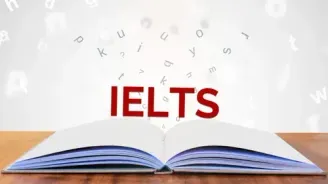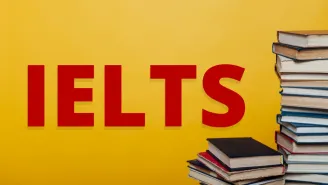Metropolis Movies Reading Answer Passage
Metropolis Movies Reading Answer Passage
Paragraph A. When German director Fritz Lang visited the United States in 1924, his first glimpse of the country was a night-time view of the New York skyline from the deck of an ocean liner. This, he later recalled, was the direct inspiration for what is still probably the most innovative and influential science-fiction film ever made – Metropolis.
Paragraph B. Metropolis is a bleak vision of the early twenty-first century that is at once both chilling and exhilarating. This spectacular city of the future is a technological marvel of high-rise buildings connected by elevated railways and airships. It’s also a world of extreme inequality and social division. The workers live below ground and exist as machines working in an endless routine of mind-numbing 10-hour shifts while the city’s elite lead lives of luxury high above. Presiding over them all is the Master of Metropolis, John Fredersen, whose sole satisfaction seems to lie in the exercise of power.
Paragraph C. Lang’s graphic depiction of the future is conceived in almost totally abstract terms. The function of the individual machines is never defined. Instead, this mass of dials, levers, and gauges symbolically stands for all machines and all industry, with the workers as slave-live extensions of the equipment they have to operate. Lang emphasises this idea in the famous shift-change sequence at the start of the movie when the workers walk in zombie-like geometric ranks, all dressed in the same dark overalls and all exhibiting the same bowed head and dead-eyed stare. An extraordinary fantasy sequence sees one machine transformed into a huge open-jawed statue, which then literally swallows them up.
Paragraph D. On one level the machines and the exploited workers simply provide the wealth and services which allow the elite to live their lives of leisure, but on a more profound level, the purpose of all this demented industry is to serve itself. Power, control, and the continuance of the system from one 10-hour shift to the next is all that counts. The city consumes people and their labour and, in the process, becomes a perverse parody of a living being.
Paragraph E. It is enlightening, I think, to relate the film to the modern global economy in which multinational corporations now routinely close their factories in one continent so that they can take advantage of cheap labour in another. Like the industry in Metropolis, these corporations’ goals of increased efficiency and profits have little to do with the welfare of the majority of their employees or that of the population at large. Instead, their aims are to sustain the momentum of their own growth and to increase the monetary rewards to a tiny elite – their executives and shareholders. Fredersen himself is the essence of the big company boss: Rupert Murdoch would probably feel perfectly at home in his huge skyscraper office with its panoramic view of the city below. And it is important that there is never any mention of government in Metropolis – the whole concept is, by implication, obsolete. The only people who have power are the supreme industrialist, Fredersen, and his magician/scientist cohort Rotwang.
Paragraph F. So far, so good: when the images are allowed to speak for themselves, the film is impeccable both in its symbolism and in its cynicism. The problem with Metropolis is its sentimental storyline, which sees Freder, Fredersen’s son, instantly falling in love with the visionary Maria. Maria leads an underground pseudo-religious movement and preaches that the workers should not rebel but should await the arrival of a ‘Mediator’ between the ‘Head’ (capital) and the ‘Hands’ (labour). That mediator is the ‘Heart’ – love, as embodied, finally, by Freder’s love of Maria and his father’s love of him.
Paragraph G. Lang wrote the screenplay in collaboration with his then-wife, Thea von Harbou. In 1933 he fled from the Nazis (and continued a very successful career in Hollywood). She stayed in Germany and continued to make films under the Hitler regime. There is a constant tension within the film between the too-tidy platitudes of von Harbou’s script and the uncompromisingly caustic vigour of Lang’s imagery.
Paragraph H. To my mind, both in Metropolis and in the real world, it’s not so much that the ‘Head’ and ‘Hands’ require a ‘Heart’ to mediate between them but that the ‘Hands’ need to develop their own ‘Head’, their own political consciousness, and act accordingly – through the ballot box, through buying power and through a sceptical resistance to the materialistic fantasies of the Fredersens.
Paragraph I. All the same, Metropolis is probably more accurate now as a representation of industrial and social relations than it has been at any time since its original release. And Fredersen is certainly still the most potent movie symbol of the handful of elusive corporate figureheads who increasingly treat the world as a Metropolis-like global village.
Let’s explore the questions and answers of the Metropolis Movies Reading passage.
Metropolis Movies Reading Answers with Sample Questions
Have you read the passage? Now, take the test and find Metropolis Movies Reading answers! Try to answer these questions by yourself before you sneak a peek at the answers given below.
Check Out Top 40+ IELTS Reading Practice Test Questions with Answers
Below are some top 40+ free IELTS Reading Practice test online questions with detailed answers to enhance your IELTS preparation online. We have provided sample passages for each test type for your reference.
- What Is Exploration Reading Answers
- Effects Of Noise Reading Answers
- The Discovery Of Baby Mammoth Reading Answers
- The Dead Sea Scrolls Reading Answers
- The Ring-Tailed Lemur Reading Answers
- Why We Need To Protect Polar Bears Reading Answers
- Nutmeg A Valuable Spice Reading Answers
- What Is Meaning Reading Answers
- Cutty Sark Reading Answers
- The Step Pyramid Of Djoser Reading Answers
- South Pole Adventurer Reading Answers
- The Future Of Work Reading Answers
- Ambergris Reading Answers
- Trees In Trouble Reading Answers
- Could Urban Engineers Learn From Dance Reading Answers
- The Flavour Of Pleasure Reading Answers
- The Value Of A College Degree Reading Answers
- Why You Should Delegate Tasks To Team Members Reading Answers
- Corporate Social Responsibility Reading Answers
- Forest Management In Pennsylvania USA Reading Answers
- Making Time For Science Reading Answers
- The Power Of Play Reading Answers
- Coastal Archaeology Of Britain Reading Answers
- How The Other Half Thinks Reading Answers
- Changes In Reading Habits Reading Answers
- The Forgotten Forest Reading Answers
- When Conversations Flow Reading Answers
- Attitudes Towards Artificial Intelligence Reading Answers
- The Ingenuity Gap Reading Answers
- A Bar At The Folies Reading Answers
- Booking A Wessex Cottages Holiday Reading Answers
- Sunset Tours Reading Answers
- Bird Migration Reading Answers
- Clutter Bugs Beware Reading Answers
- The Hidden Histories Of Exploration Exhibition Reading Answers
- Calisthenics Reading Answers
- Having A Lovely Time Reading Answers
- The Return Of Huarango Reading Answers
- Summer Activities At London Kew Gardens Reading Answers
- Computer Games For Preschoolers Reading Answers
- Extinct The Giant Deer Reading Answers
- Micro Enterprise Credit For Street Youth Reading Answers
- Plain English Campaign Reading Answers
- Glow Worms Reading Answers
- How To Prepare For An Interview Reading Answers
- Quiet Roads Ahead Reading Answers
- Sculpture Reading Answers
- Cornwall Reading Answers
- Latchkey Children Reading Answers
- Healthy Intentions Reading Answers
- Makete Integrated Rural Transport Project Reading Answers
- Allergy Testing Reading Answers
- Life Casting And Art Reading Answers







